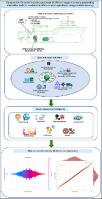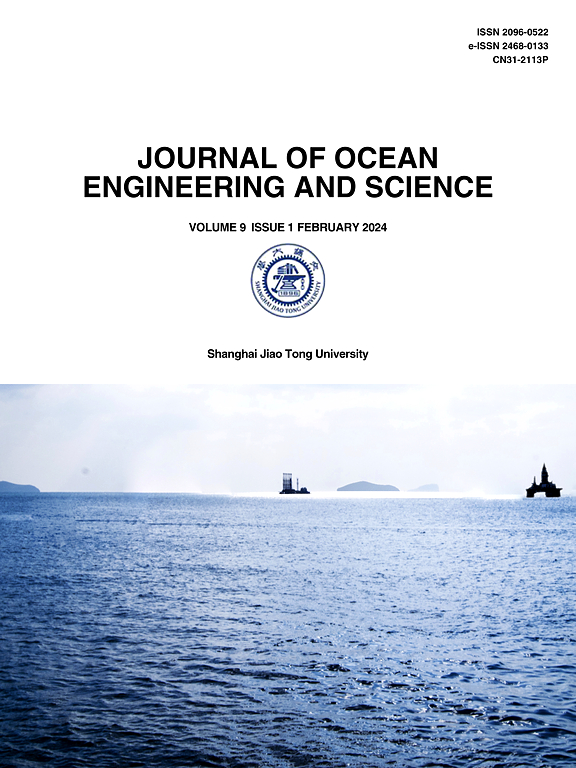使用机器学习对可持续海上风力发电替代燃料驱动的海上支持船的生命周期影响进行比较评估
IF 11.8
1区 工程技术
Q1 ENGINEERING, MARINE
引用次数: 0
摘要
海上锚处理拖船供应(AHTS)船是一种海上支持船,对于处理海上结构、石油钻井平台和风力涡轮机的锚,将其拖到遥远的深海位置并将其固定在适当位置至关重要。随着人们对碳基燃料的环境足迹和即将到来的碳税的日益关注,国际海事组织、政策制定者、船级社、航运公司和利益相关者正在寻求更清洁的替代品。LNG(液化天然气)和绿色氨作为能源载体被认为是未来海上船舶清洁替代品的主要竞争者。本研究评估了由LNG和Green氨作为海上作业船用燃料的新建AHTS船的环境性能。本环境影响评估研究采用IPCC和环境足迹方法。考虑了广泛的影响组:全球变暖、人类毒性、富营养化、生态毒性和与大气相关的影响,并分析了过程影响。本研究使用随机森林、决策树和XGBOOST模型等监督式机器学习算法进行环境绩效评价和预测。研究表明,最近制造的AHTS船,使用传统燃料,如重油、船用柴油和液化天然气,与绿色氨相比,每吨公里的GTP 100和GWP 100排放水平显著增加,与重油相比分别增加了44%和10.6%。此外,XGBOOST回归模型在GWP 100的预测精度上优于随机森林和决策树模型。分析并提出,有效管理不可持续的过程将最大限度地减少环境足迹,减少碳、氮氧化物、液化天然气和氨基排放。本文章由计算机程序翻译,如有差异,请以英文原文为准。

Comparative life cycle impact assessment of offshore support vessels powered by alternative fuels for sustainable offshore wind operations using machine learning
Offshore Anchor handling tug supply (AHTS) vessels, a type of offshore support vessel, are critical for the operations related to handling anchors of offshore structures, oil rigs, and wind turbines, towing them to remote deep-sea locations, and securing them in place. Amidst growing concerns regarding the environmental footprints of carbon-based fuels and impending carbon taxation, the International Maritime Organization, policymakers, classification societies, shipping firms, and stakeholders are seeking cleaner alternatives. LNG (Liquefied natural gas) and Green ammonia as energy vectors are considered among the top contenders for future clean alternatives for offshore vessels. This study evaluated the environmental performance of newly built AHTS vessels powered by LNG and Green ammonia as marine fuels designed for offshore operations. This environmental impact assessment study uses IPCC and Environmental footprint methodologies. Considered broad impact groups: Global warming, human toxicity, eutrophication, ecotoxicity, and atmosphere-related impacts, and analyzed the process impacts. This study uses Supervised machine learning algorithms such as the Random forest, Decision tree, and XGBOOST models for environmental performance evaluation and prediction. The study reveals that the recently manufactured AHTS vessel, utilizing conventional fuels like Heavy fuel oil, Marine diesel oil, and LNG, exhibits significantly increased GTP 100 and GWP 100 emission levels per tonne-kilometer when compared to green ammonia, with a 44 % and 10.6 % rise compared to Heavy fuel oil, respectively. Furthermore, the XGBOOST regression model outperformed the Random forest and Decision tree models in predictive accuracy for GWP 100. It is analyzed and proposed that effectively managing unsustainable processes would minimize environmental footprints and reduce carbon, nitrogen oxide, LNG, and ammonia-based emissions.
求助全文
通过发布文献求助,成功后即可免费获取论文全文。
去求助
来源期刊

Journal of Ocean Engineering and Science
Multiple-
CiteScore
11.50
自引率
19.70%
发文量
224
审稿时长
29 days
期刊介绍:
The Journal of Ocean Engineering and Science (JOES) serves as a platform for disseminating original research and advancements in the realm of ocean engineering and science.
JOES encourages the submission of papers covering various aspects of ocean engineering and science.
 求助内容:
求助内容: 应助结果提醒方式:
应助结果提醒方式:


